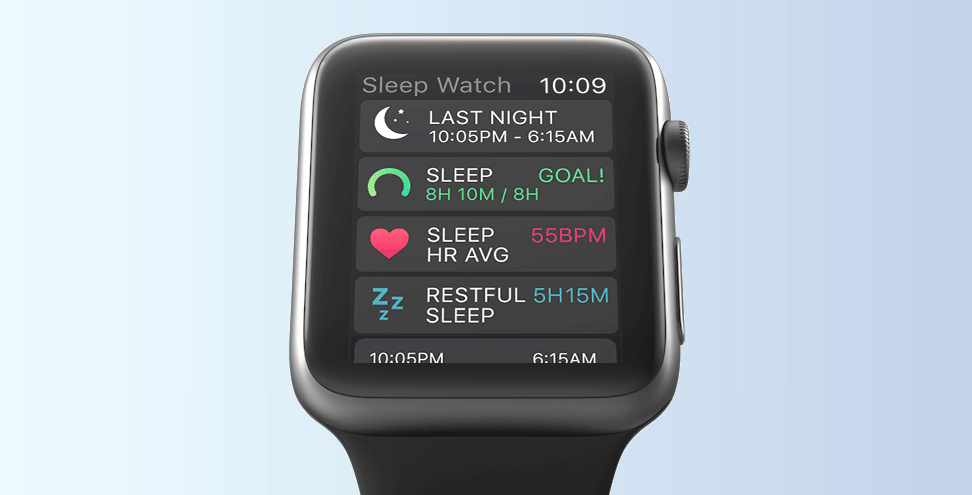
A collaboration between the University of California San Francisco and a startup called Cardiogram recently conducted a new study that suggests that the Apple Watch, and other wearable heart-rate sensors, may be able to detect high blood pressure and sleep apnea when used in conjunction with their app. The study consists of data from UCSF for more than 6,000 Apple Watch users who participated in a study on mobile health and points to a successful outcome.
How Does It Work?
The app organizes heart-rate data from fitness devices such as the Apple Watch, Fitbit, and other wearable devices which have built-in heart-rate sensors. Paired with the “right machine-learning algorithms,” the Apple Watch’s heart-rate sensor and pedometer can make a reasonable prediction of whether a person has high blood pressure or sleep apnea.
The engineers at Cardiogram’s created this technology by mimicking the kind of artificial neural networks that Google uses to turn our speech into text and altered them to interpret heart-rate and step count data. The app, called DeepHeart, takes the user’s information and compares it to heart-rate, step, and medical data from a large segment of people. This May, Cardiogram and UCSF released DeepHeart’s results showing that the app could indeed predict atrial fibrillation from a person’s Apple Watch data.
How Accurate is the Prediction?
The study shows that once the app receives one week’s worth of data on the individual, the algorithms can predict hypertension with 80 percent accuracy and sleep apnea with a staggering 90 percent accuracy.
What is Sleep Apnea?
Sleep Apnea, also known as obstructive sleep apnea (OSA), is a
common disorder that affects a reported 32 million Americans. It is when an
individual experiences shallow breathing or stops breathing for 10 seconds or
longer each time, several times an hour while sleeping. These pauses can occur
anywhere from 5 to more than 60 times in one hour before regular breathing
resumes, usually accompanied with a loud snort or choking sound.
While all levels are dangerous, some are more serious than others.
Mild sleep apnea is characterized by 5 to 15 apneic episodes per hour; moderate
sleep apnea is defined by 15 to 30 per hour, and severe sleep apnea is
categorized as more than 60 times an hour and that’s stopping breathing every 1
minute for 10 seconds or longer.
The Dangers of Undiagnosed Sleep Apnea
Poor-quality sleep and heart disease are undoubtedly connected. The disrupted breathing which happens
with sleep apnea is what has been shown to cause hypertension and heart
conditions. If sleep apnea is left undiagnosed or untreated, it can make you
five times more likely to die from a heart-related issue.
Aside from heart-related issues, sleep apnea has also been linked
to dementia, diabetes, GERD, metabolic syndrome,
cognitive impairment, stroke, sexual dysfunction, obesity, high-risk pregnancies, and mental illness. It also carries problematic symptoms such as
daytime sleepiness, brain fog, irritability, strained relationships, headaches,
reduced performance at work, and a higher likelihood of automobile accidents.
While your Apple Watch may be able to warn you of a potential
health concern, it can’t treat you (not yet at least). If you suspect you may
have sleep apnea (or your watch is suggesting it), see your dentist, doctor or
a sleep specialist to complete a sleep study. For most people, an at-home sleep
study is just as accurate as a facility-based in-lab sleep study. Once you get
the results, you can sleep a little easier with a clean diagnosis, or if you do
have sleep apnea, follow treatment guidelines and communicate with your sleep
medicine team which can include your dentist, preferably an APP-NEA certified
dentist.
Have
more questions about sleep apnea and treatment? Contact us at APP-NEA for answers to your questions and find a sleep
medicine practitioner near you.